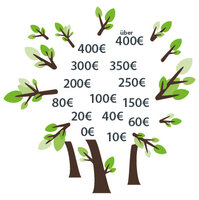Expertise
Contingent Valuation
Marie von Meyer-Höfer and Peter Elsasser | 29.06.2022
The Contingent Valuation Method is one of several ways to determine consumers' preferences and willingness to pay for products and certain product features.
In environmental economics, this method was developed to determine the monetary values that people place on environmental goods. It was used, for example, to assess the environmental damage caused by the Exxon Valdez oil spill off the coast of Alaska in 1989.
The term "Contingent Valuation" refers to the fact that a hypothetical market situation must be constructed for the valuation in which the respective good to be valued would have to be paid for. Valuations are therefore determined by this hypothetical market situation.
An example for a Contingent Valuation Question series
“Just imagine that the costs for the forest would not be financed as they are today, but would have to be covered by entrance fees. Everyone who wants to visit a forest would have to buy an annual ticket.
Please think carefully about how much you would be willing to pay per person for such an annual pass. Choose an amount in euros from the chart on the right.
Have you chosen 0 Euros because you:
- would rather not visit the forest than pay an entrance fee
- come to the forest too seldom
- find the question nonsensical
- think that forest recreation cannot be valued with money
- Other reasons
If an annual pass were more expensive than the amount you have chosen, would you prefer to avoid forest visits near your home altogether?
- yes
- no, then I would pay more
How much would you pay in the extreme case?
In contrast to environmental goods, the value of private or market goods can be determined unproblematically via their price at the shop counter. However, even with market goods there are situations in which market prices cannot be used – for example, because they are not yet available on the market (new products). The market suitability of a product and its expected profitability before its introduction can be determined via determined willingness to pay. The situation is similar with product improvements. The determination of willingness to pay is relevant in market research when it comes to the question of what price consumers are willing to pay for a changed, improved product.








